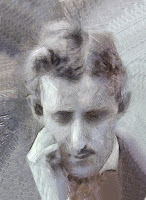 |
| 18-year old Walter Harris |
Harris, born about 1942, made history by becoming the first black player to obtain a US Master rating in 1959. He gave up chess the late 70s or early 80s and when interviewed by Dr. Daaim Shabazz of the Chess Drum back in 2014, he was unaware of the progress of black players and GM Maurice Ashley and Emory Tate were unknown to him.
Earlier in the week before the 1959 U.S. Open, Harris placed 5th in the U.S. Junior Open in Omaha, Nebraska with 6-3 behind Robin Ault and Gilbert Ramirez (tied, Ault getting the nod on tie breaks) and Larry Gilden and Raymond Weinstein (tied).
He stayed in town for the Open itself where he scored a credible 7-5. Harris himself was disgusted with the tournament even though he finished in 5th place. After defeating the up-and-coming Raymond Weinstein in the first round, he went on to rack up an excellent 7-2 score then lost his last three games (to James Sherwin, Hans Berliner and Eleazar Jimenez).
Originally from New York, Harris was a scholarship winner and studied physics at Hunter College in New York City. He honed his skills at the Manhattan and Hawthorne chess clubs and won the Junior Championship of the Marshall Chess Club. However, most of his chess career was spent in the Bay area of California where he won the Sacramento City Championship at least twice (1964 and 1967). Harris served with the Air Force during the early to mid-1960s and was stationed at Mather Air Force Base in California. In the late 1990s he relocated to Virginia where he worked as scientist at the U.S. Naval Observatory in Washington, D.C.










